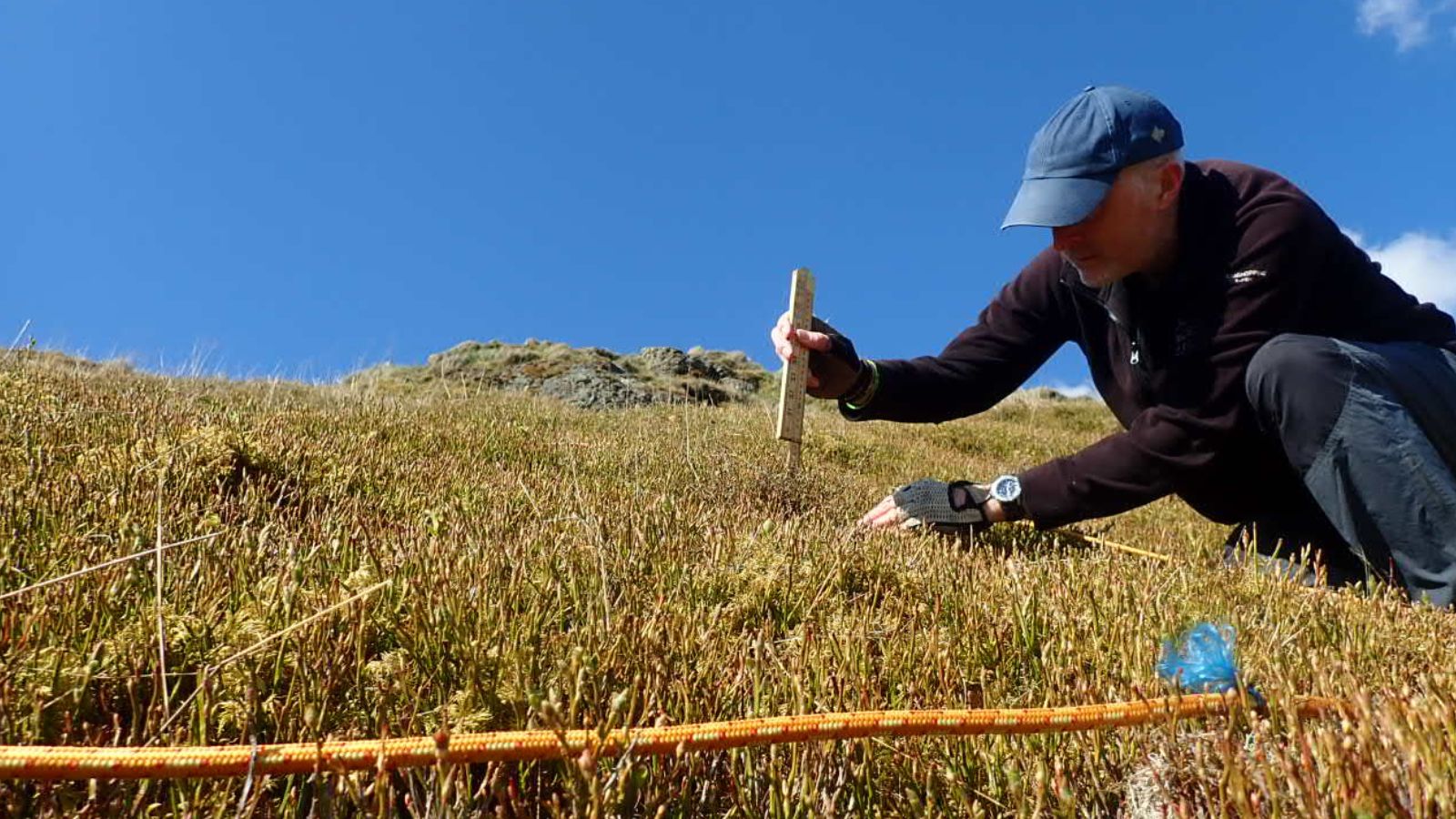Our Head of Ecology, Lindsay Mackinlay has been at Dumyat conducting one of his regular biodiversity surveys, this time he is focusing on the heathland and rare Sticky Catchfly flower. Take a look…
A key part of our work at the Future Forest Company is checking the condition of the species and habitats under our care. In this increasingly technological age, some things, like site condition monitoring, still need to be carried out using the naked eye, or as we like to call it, by the boots on the ground.
This week, I’ve been scrambling around the crags and more exposed parts of our Dumyat property, checking up on the condition of our heathland as well as identifying the best places to sample the iconic flower here, the Sticky Catchfly. A large area of our Dumyat property is being currently planted with trees but we’ve also left large areas unplanted in order to retain the character of the place and to also conserve other species and habitats that prefer more open land. You can explore our interactive map of Dumyat and learn more about our plans.

Before leaving the car park at Blairlogie, I have checked that I have packed the following in my rucksack…tablet (to help me navigate to key heathland parcels), a handheld GPS (to record species records to within 3m), a camera (to photograph quadrats), spare batteries, rope and pegs (my quadrat), paper and pens (I’m old-fashioned in that sense), waterproof-paper (I’m a realist), spot-locator (I’m working alone so it tells my rescuers where I am if I get into trouble), binoculars, waterproof jacket and trousers, water bottle, hot flask (it is Scotland in spring after all), and of course, the most important item, my lunchbox….never, ever get separated from your food! Not unsurprisingly, my rucksack isn’t that light!

Surveying Sticky Catchfly at Dumyat
Thirty minutes after leaving my car, I have slogged and scrambled up one of the crag gorges in order to check on the Sticky Catchfly growing up top. I see no-one because most sensible people use the main track to get to the summit of Dumyat. However, I am not alone. A pair of ravens circle overhead and a kestrel regularly flies by hunting on the steep grassy slopes. A beautifully coloured male wheatear, one of our migrants, hops on rocks nearby to watch me, whilst skylark are now singing overhead. A cold wind cuts across from the North Sea but in the lee of a large rock, the sun heats me up. It doesn’t take long to find some clumps of Sticky catchfly and I take out my little garden labels to mark each one (this helps counting plants when they are close to each other).
A quick GPS reading and the site is noted for a return in May to see how many clumps start to flower. The good news is that many of the plants look strong and fleshy and don’t seem to have been browsed too much – sheep left the site about a year ago and we manage our roe deer. I am pleased to see plants looking healthy well within ‘munching range’! We are currently getting things right for this species but we will have to watch and see if other plants start to outcompete it on lower areas away from the cliffs as it is not the only plant to appreciate not being eaten.

Surveying Heathland at Dumyat
I then wander over to an area of heathland on steep slopes nearby and set out my first quadrat on some remnant heathland and start recording what is in and around it. Are key indicator species present, like ling heather and blaeberry? Do they make up more than 50% of the vegetation cover? Are there different growth stages of heather present? What is the average vegetation height? Is it threatened by bracken or gorse?….you get the idea..I do this time and time again on plots right across Dumyat in order to get a representative feel for how things are going. It’s mentally tiring work as you need to concentrate a lot so you don’t miss anything, but the rewards are always there, with a red kite flying within 20m of me on my last quadrat. Wow!
The work doesn’t stop there. Back at the office, I write up my notes and assess the heathland condition. How is it doing? Well, it is recovering its condition well after decades of sheep grazing but lacks a diverse structure, with little very old heather and little very young heather too….yet….next up is the ancient woodland down in the Menstrie Glen. Is there any natural regeneration? Watch this space!
Could your workplace or business sponsor nature’s recovery?
By working in partnership with us, your business can not only help nature’s recovery and tackle the climate crisis, but also benefit your employee wellbeing and customer satisfaction. Learn more and get in touch to Sponsor Biodiversity today.




